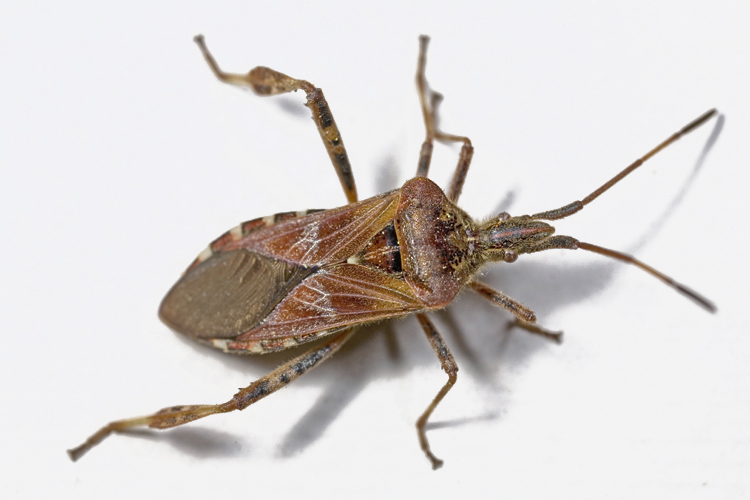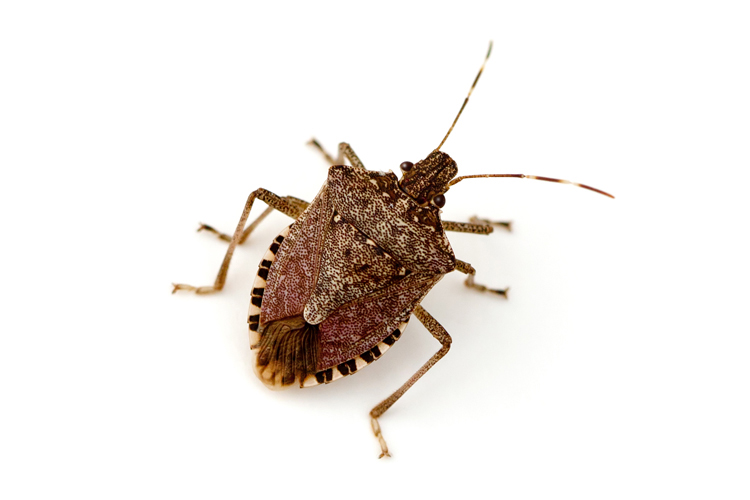Have you seen stink bugs around your Massachusetts home?
Wait a minute. What do you mean, “that’s not a stink bug?” I’m not saying that yo haven’t seen stink bugs at all. However, if you thought this was a stink bug, you are mistaken.

Similar as it may be to a stink bug, this is a Western conifer seed bug.
I admit, the Western conifer seed bug does look similar to a marmorated stink bug – especially when you do not see them side-by-side. When you get a good look at them together, though, their differences are more pronounced. There are some other similarities between these two autumn pests, though.

How are stink bugs and seed bugs similar?
Though they are not in the Pentatomidae family, classified as shield bugs or stink bugs, the Western conifer seed bug does emit an odorous liquid as a defense mechanism. A seed bug can be stinky, but it is still not a stink bug. When frightened or flattened, the seed bug emits a musky, turpentine odor. Most of us probably have more experience with the stink bug’s odor. Different folks report different translations of this smell, though. Most commonly, stink bugs are said to smell like cilantro. Others liken it to skunk or ammonia.
Western conifer bugs and seed bugs both congregate in large groups. Both seek warm shelter in and around our homes in autumn. Both bugs make a loud, buzzing sounds when in flight. Stink bugs feed on grasses and weeds before maturing to adulthood. As adults, they are more apt to move in on crops, such as apples, pecans, and peaches. Similarly, seed bugs feed primarily on immature cones and seeds of various coniferous trees. They prefer Douglas firs and hemlock, but as they grow, they too, can invade fruit crops and flowers.
Exterminating stink bugs and seed bugs happens similarly.
Both bugs have a hard shell, and require specially-formulated pesticides. There are ways to rid your home of stink bugs and seed bugs, which does not require chemical elimination. The quickest, easiest recommendation requires a bug-busting machine you likely already have – a wet-dry vacuum. Because they do stink and might mess up indoor vacuum cleaners, it is not recommended to use anything other than a shop-vac. Some folks recommend adding water to the shop vac before sucking up the insects, while others recommend vacuuming them and sealing them up in plastic.
These bugs are not dangerous like ticks, but…

No matter your chosen method, exterminating should be done on-sight. Do not allow either of these bugs to congregate for days or weeks before attempting to get rid of them. They can easily make their way into your home or inside your walls. The sooner you get rid of them, the better!